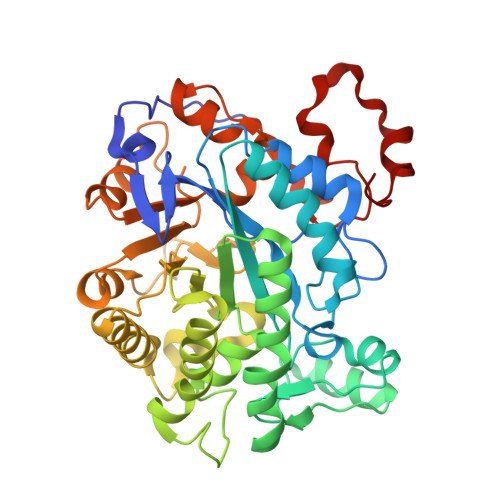Residues Controlling Facial Selectivity in an Alkene Reductase and Semirational Alterations to Create Stereocomplementary Variants.
Walton, A.Z., Sullivan, B., Patterson-Orazem, A.C., Stewart, J.D.(2014) ACS Catal 4: 2307-2318
- PubMed: 25068071
- DOI: https://doi.org/10.1021/cs500429k
- Primary Citation of Related Structures:
4M5P, 4QAI - PubMed Abstract:
A systematic saturation mutagenesis campaign was carried out on an alkene reductase from Pichia stipitis (OYE 2.6) to develop variants with reversed stereoselectivities. Wild-type OYE 2.6 reduces three representative Baylis-Hillman adducts to the corresponding S products with almost complete stereoselectivities and good catalytic efficiencies. We created and screened 13 first-generation, site-saturation mutagenesis libraries, targeting residues found near the bound substrate. One variant (Tyr78Trp) showed high R selectivity toward one of the three substrates, but no change (cyclohexenone derivative) and no catalytic activity (acrylate derivative) for the other two. Subsequent rounds of mutagenesis retained the Tyr78Trp mutation and explored other residues that impacted stereoselectivity when altered in a wild-type background. These efforts yielded double and triple mutants that possessed inverted stereoselectivities for two of the three substrates (conversions >99% and at least 91% ee ( R )). To understand the reasons underlying the stereochemical changes, we solved crystal structures of two key mutants: Tyr78Trp and Tyr78Trp/Ile113Cys, the latter with substrate partially occupying the active site. By combining these experimental data with modeling studies, we have proposed a rationale that explains the impacts of the most useful mutations.
Organizational Affiliation:
Department of Chemistry, 126 Sisler Hall, University of Florida , Gainesville, Florida 32611 United States.















